How to choose your next air purifier
Select is editorially independent. Our editors selected these deals and items because we think you will enjoy them at these prices. If you purchase something through our links, we may earn a commission. Pricing and availability are accurate as of publish time.
Air purifiers are increasingly in high demand — the air purifier market is projected to surpass $7 billion by 2032, according to Bloomberg. That demand might be explained by the state of air in our homes that, according to the Environmental Protection Agency, can be more polluted than the air outside. Year round, air purifiers serve an important purpose: reducing indoor air contaminants that arise from everyday life.
SKIP AHEAD Best air purifiers | What is a HEPA filter? | What is CADR?
Air purifiers are designed to remove indoor air pollution that results from cooking, car emissions, dust and fires, among other things. These air particles can irritate lungs or trigger allergic reactions, explained Kenneth Mendez, president of the nonprofit Asthma and Allergy Foundation of America. To help guide your search for an air purifier that best suits your needs and budget, we consulted experts to learn more about air purifiers and what you need to know before buying one.
How to find the best air purifier for you
Experts agree that filtration is key when choosing an air purifier — measuring that can be tricky. There are several standards and testing procedures that help show how efficiently air purifiers clear the air in a room. Experts highlighted two considerations above the rest.
High-efficiency particulate air filters, or HEPA filters. Every expert we spoke to agreed HEPA is a strong mark for filtration, but lack of regulation can complicate your shopping. That’s why experts recommend you couple HEPA-level filtration with the air purifier’s CADR, which gives you more information about how well an air purifier will clear a given space of contaminants (including tobacco smoke, dust and pollen), its primary purpose. Learn more about HEPA filters
Clean air delivery rating, or CADR. The Association of Home Appliance Manufacturers works with independent laboratories to certify air purifiers that meet its standards, including verification of their CADRs across different particulates like dust and pollen. CADR tells you how much air (in cubic feet per minute) an air purifier can process within one minute. According to AHAM, your air purifier should have a CADR rating equivalent to about two-thirds the area of your space (in square feet). For more on HEPA and CADR, see our primer on HEPA and CADR filtration testing. Learn more about CADR
Best air purifiers
Since we don’t test air purifiers ourselves, we rely on expert guidance to recommend the best air purifiers. Aligning with that guidance, the air purifiers below are AHAM-approved and recommended by Consumer Reports. For each purifier, we list its capacity and efficiency rates, according to AHAM testing. We ordered them by their capacity in square feet.
Blueair Classic 605
In Consumer Reports testing, this air purifier was one one of only four models tested that rated “Excellent” for removing particles at both the highest and lowest speeds. The purifier uses the brand’s HEPASilent technology, which Blueair says can filter 99.97 percent of particles down to 0.1 microns. You can also control settings from the companion Blueair app or from an Alexa device with voice control.
Tobacco Smoke CADR: >450
Dust CADR: >400
Pollen CADR: >450
Capacity: 698 square feet
Blueair Classic 605
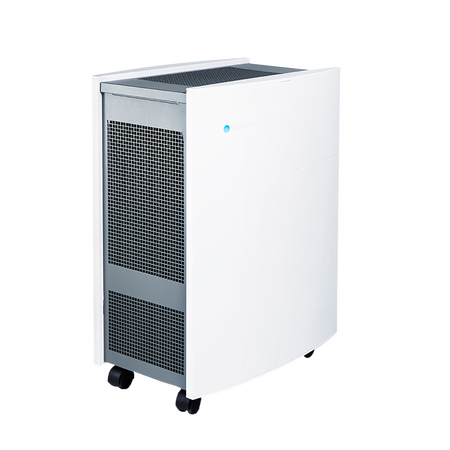
Blueair Blue Pure 211+
Like the Blueair Classic 605, this purifier is one of just four Consumer Reports-tested air purifiers to earn an “Excellent” rating on both the highest and lowest speed settings. Like the other Blueair purifiers, this model uses the brand’s HEPASilent technology, which the company says can filter 99.97 percent of particles down to 0.1 microns.
Tobacco Smoke CADR: 350
Dust CADR: 350
Pollen CADR: 350
Capacity: 540 square feet
Blueair Blue Pure 211+
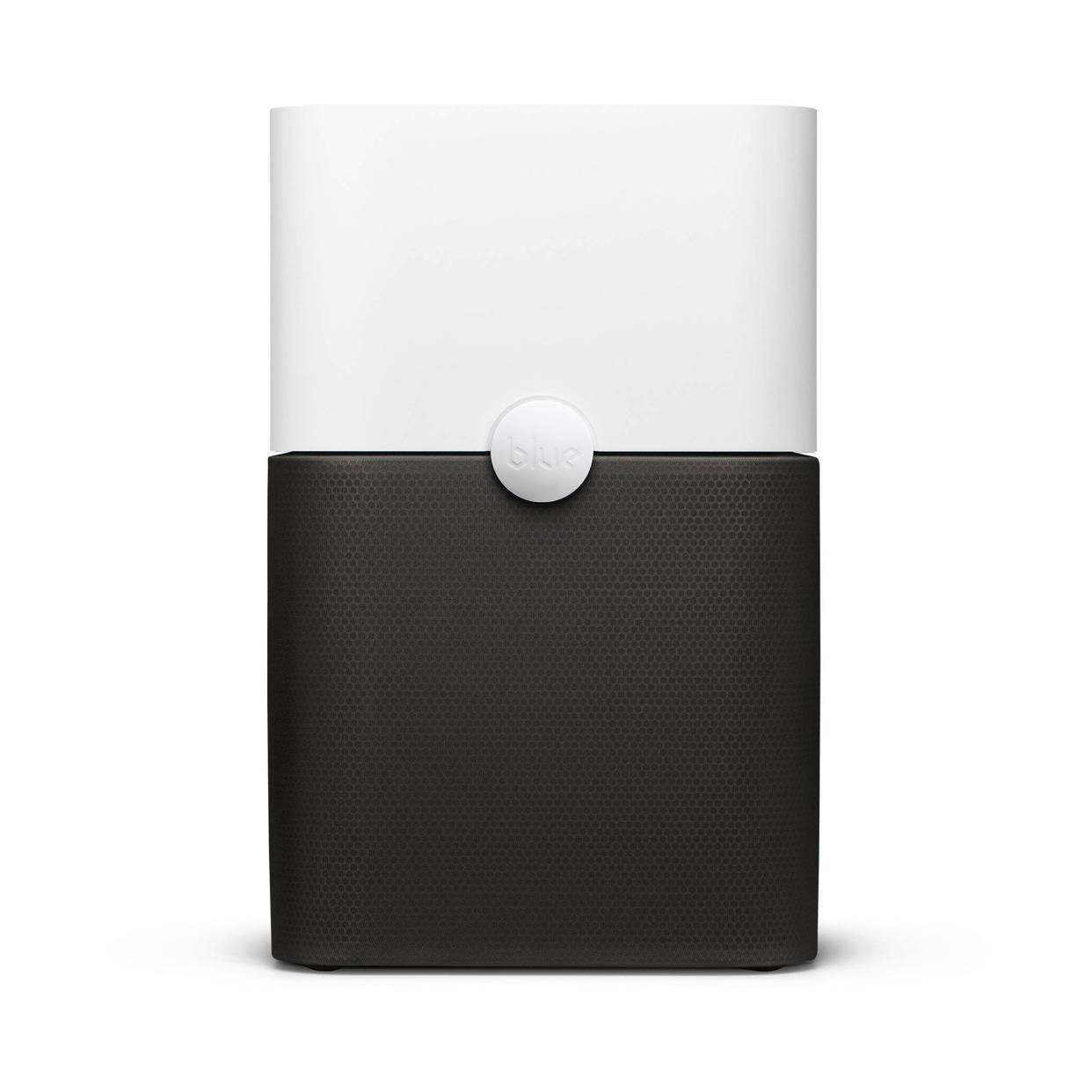
Blueair Blue Pure 211+ $285.90 at Amazon
Blueair Blue Pure 211+ $319.99 at Target
Blueair Blue Pure 211+ $319.99 at Best Buy
Honeywell HPA300 Air Purifier
Honeywell says this HEPA purifier filters and circulates air up to five times an hour. It is relatively affordable given its size and comes with features like a timer setting and filter change indicator. It has two filters: a pre-filter to capture large particles like pet hair and lint, and a HEPA filter for smaller particles. AHAM provided the following ratings for the air purifier:
Tobacco Smoke CADR: 300
Dust CADR: 320
Pollen CADR: 300
Capacity: 465 square feet
Honeywell HPA300 Air Purifier

Honeywell HPA300 Air Purifier $181.66 at Amazon
Blueair Protect 7470i
This purifier rated highly in Consumer Reports tests, with an “Excellent” rating on the highest setting and “Very Good” rating on the lowest setting. The purifier also uses the brand’s HEPASilent technology, which Blueair says can filter 99.97 percent of particles down to 0.1 microns. You can also connect to the companion Blueair app to track your air quality.
Tobacco Smoke CADR: 270
Dust CADR: 275
Pollen CADR: 280
Capacity: 418 square feet
Blueair Protect 7470i

Blueair Protect 7470i $599.99 at Amazon
Blueair Protect 7470i $599.99 at Best Buy
Blueair Protect 7470i $759.99 at Bed Bath and Beyond
Instant AP300 Air Purifier
The Instant Air Purifier features a 3-in-1 filtration system, including a HEPA-13 filter and a carbon filter, as well as an antimicrobial coating on filters to prevent bacterial growth. Notably, the brand says it can remove 99.9 percent of the virus that causes Covid from treated air. It’s available in Charcoal and Pearl colors, and they also feature sensors that monitor air quality and a day-to-night mode.
Tobacco Smoke CADR: 251
Dust CADR: 259
Pollen CADR: 289
Capacity: 388 square feet
Instant AP300 Air Purifier
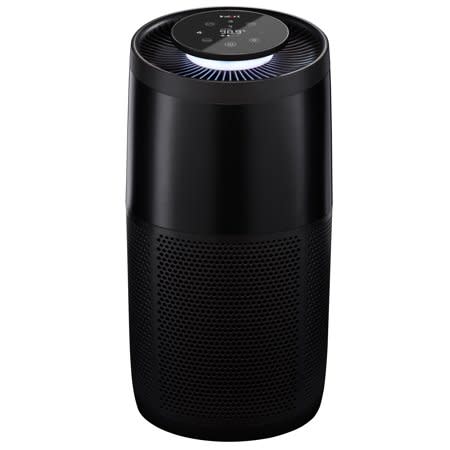
Instant AP300 Air Purifier $232.84 at Amazon
Instant AP300 Air Purifier $239.95 at Williams Sonoma
Instant AP300 Air Purifier $179.43 at Walmart
Bissell air320 Max Smart WiFi Air Purifier
Bissell’s air purifier is Wi-Fi equipped, allowing you to control it through the brand’s app or monitor air quality when you’re not home. Its three-stage filtration system includes a pre-filter, an activated carbon filter and a HEPA filter. The air purifier has an Automated CirQulate System that monitors and provides indoor air quality readings, and it adjusts to the appropriate fan speed accordingly.
Tobacco Smoke CADR: 234
Dust CADR: 247
Pollen CADR: 264
Capacity: 363 square feet
Bissell air320 Max Smart WiFi Air Purifier
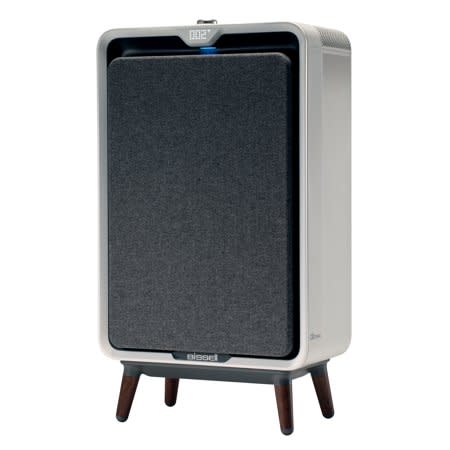
Bissell air320 Max Smart WiFi Air Purifier $350.19 at Amazon
Bissell air320 Max Smart WiFi Air Purifier $350.19 at Walmart
Bissell air320 Max Smart WiFi Air Purifier $350.19 at BISSELL
Germ Guardian AC4825 Air Purifier
The GermGuardian AC4825 is a 3-in-1 air purifier that includes a HEPA filter, charcoal and PCO filter, UV-C sanitizer and TIO2 treatment. It is equipped with three speed settings and comes with a filter replacement indicator.
Tobacco Smoke CADR: 99
Dust CADR: 118
Pollen CADR: 125
Capacity: 153 square feet
Germ Guardian AC4825 Air Purifier
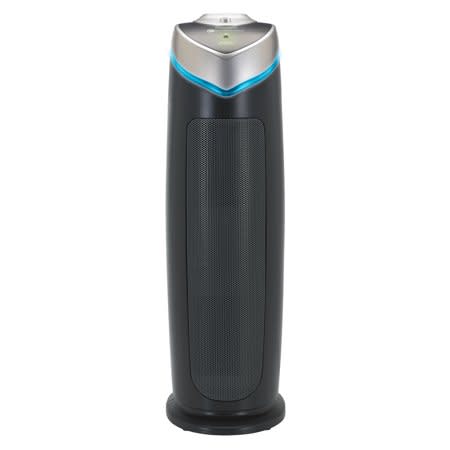
Germ Guardian AC4825 Air Purifier $99.99 at Amazon
Germ Guardian AC4825 Air Purifier $99.99 at Best Buy
Related: These manual toothbrushes can be as effective as electric toothbrushes — if used correctly.
Other highly rated air purifiers to consider
While not rated by AHAM, we think you may want to consider the highly rated air purifiers below, too: Each one comes from a notable brand we've previously recommended and equips a HEPA filter, according to its brand.
Levoit LV-H132 Air Purifier
The Levoit LV-H132 removes particles from the air with its three-stage filtration system that includes a pre-filter, a true HEPA filter and an activated carbon filter. It circulates the air in the room over four times in an hour and is equipped with a built-in smart filter replacement reminder and night light. Levoit says it has a cleaning capacity of 129 square feet. I personally trust this purifier to clear the air in my small apartment of contaminants, and since I’ve used it, I’ve felt that considerably less dust has collected in my apartment.
Levoit LV-H132 Air Purifier
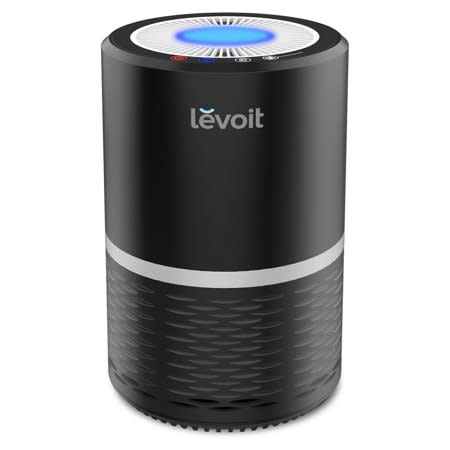
Dyson Purifier Cool
The Dyson Purifier Cool is designed to clean air more efficiently than previous models and do it more quietly. Its re-engineered filtration system makes the entire machine meet the HEPA H13 standard, not just the filter — the air purifier can capture 99.97 percent of particles that are as small as 0.3 microns. The air purifier allows you to choose from multiple modes, and it has sensors that analyze the air for pollutants. It’s Wi-Fi equipped, so you can control it from Dyson’s app or via Amazon Alexa, Siri and Google Home. The air purifier is available in Nickel/Black and White/Silver.
Dyson Purifier Cool
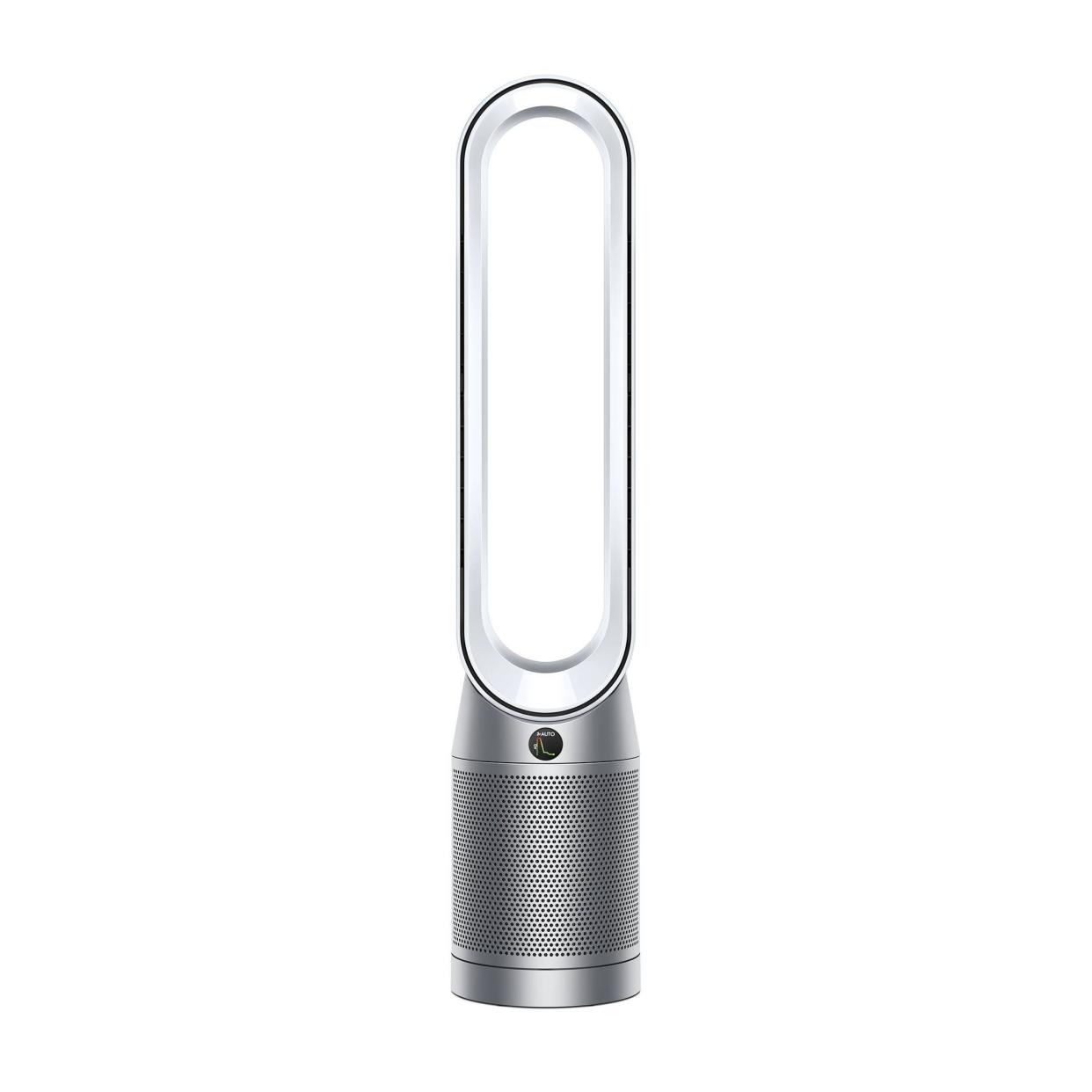
Cuisinart Purxium Freestanding Air Purifier
In addition to its HEPA filter, Cusinart’s air purifier also features washable, reusable metal filters and active carbon filters, all of which work together to capture 99.9 percent of airborne particles 0.1 microns or larger. It offers a timer, an automatic shutoff option and four fan speeds. The air purifier comes in two sizes: Freestanding, which has a cleaning capacity of 1,000 square feet, and Countertop, which has a cleaning capacity of 500 square feet, according to the brand.
Cuisinart Purxium Freestanding Air Purifier
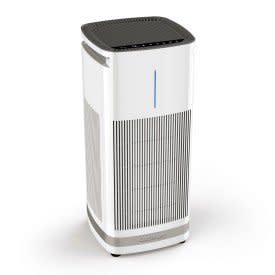
Cuisinart Purxium Freestanding Air Purifier $299.95 at Wayfair
Cuisinart Purxium Freestanding Air Purifier $299.95 at Walmart
What is a HEPA filter?
HEPA filters should meet a Department of Energy standard of clearing out at least 99.97 percent of particulates that are 0.3 microns in size, the particle size that most easily evades filtration, according to the EPA. Particles larger than 0.3 microns have a difficult time fitting through the filter, and smaller particles move too haphazardly to pass through. Having a HEPA filter, by definition, should ensure efficient filtration.
But HEPA isn’t a centrally regulated standard, explained Michael Corbat, vice president of engineering for Rensa Filtration, so it’s up to companies and sometimes third-party laboratories to test filters. Tests like these are based on standards created by organizations like the Institute of Environmental Sciences and Technology (IEST). To determine whether you can trust HEPA features you see on an air purifier you’re considering, Corbat says to look for “compliance” with an “accepted test method” like IEST RP-CC-001. But the lack of oversight is still a concern — you’re relying on manufacturers to perform and report on these tests correctly.
Corbat also said that since HEPA testing methods involve a single pass through, and air purifiers use multiple pass throughs when processing air, HEPA tests aren’t as suitable for these devices. The tests also don’t give much information on how fast a purifier can process air or how much air one can clear in a certain time period. Rather than rely on decentralized HEPA testing and manufacturer claims, Corbat recommended finding air purifiers tested and certified by AHAM that are given a CADR by the organization.
What is CADR?
CADR measures the “volume of filtered air an air cleaner delivers, with separate scores for tobacco smoke, pollen and dust,” according to AHAM, often measured in cubic feet per minute (sometimes in cubic meters per hour).
These tests are helpful because they quantify both how fast and how effectively a purifier clears a room of contaminants — the test better fits the real world application of air purifiers than HEPA tests do. For example:
A tobacco smoke CADR rating of 234 means the air purifier can remove smoke and deliver 234 cubic feet of clean air at per minute
A dust CADR of 320 means that the air purifier can remove dust and deliver 320 cubic feet of clean air
A pollen CADR of 125 means that the air purifier can remove pollen and deliver 125 cubic feet of clean air per minute
All air purifiers certified by AHAM have been tested in an independent laboratory and across the same metrics and given a CADR, AHAM says. You can find the CADR ratings of any AHAM-certified air purifier on the AHAM Verifide website — a centralized resource that makes it simple to compare one purifier to another and find one that helps best suit your needs.
AHAM also tests air purifiers for whether they meet ozone limits — Mendez explained that ozone can be a byproduct of some air purifiers. Ozone is very reactive and is effective for removing odors and killing mold. But it can also "can cause health problems at high concentrations," according to the EPA.
In short, if an air purifier has AHAM testing data, you’ll have a fairly complete picture of how the purifier is likely to perform in real life circumstances and whether the purifier will fit your needs.
Consumer Reports Filtration Testing
Other groups have their own standards for testing. Consumer Reports, for example, tests air purifiers by injecting 0.1- to 1-micron particles into a sealed chamber, then measuring the particle concentration after running an air purifier for 15 minutes (at both highest and lowest speeds) — for more on their conclusions, you can check out their picks for the best and worst air purifiers.
Tips for maintaining good air quality
Outside of buying an air purifier, there are some good home habits that you can adopt to help reduce the amount of air pollution in your space. The CDC offers a range of guidance for how to improve ventilation in buildings, including:
If you can, open your windows and doors as safety allows.
Place fans to increase fresh airflow from open windows.
Make sure your exhaust fans are operational.
Catch up on Select's in-depth coverage of personal finance, tech and tools, wellness and more, and follow us on Facebook, Instagram and Twitter to stay up to date.
